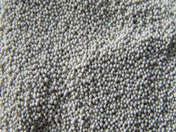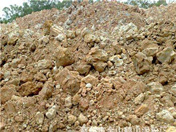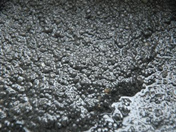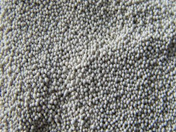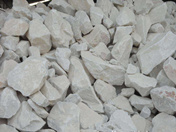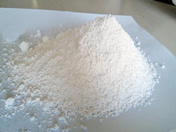Zhengzhou Taida welcome your visiting to our website!
 SITEMAP|
中文站|
CONTACT US|
ONLINE MESSAGE
SITEMAP|
中文站|
CONTACT US|
ONLINE MESSAGE
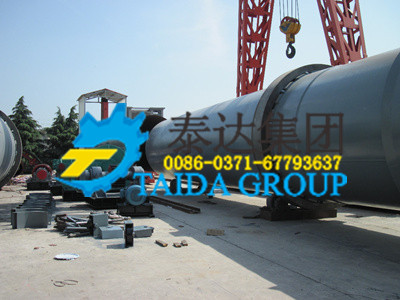
Gypsum Rotary Kiln
Specifications:
Application Range:Construction Engineering, pharmacological treatment, mold processing, chemical industry, cement regulation, and many other fields.
Applicable Materials:Gypsum, Phosphogypsum, sulfur gypsum, power plant gypsum, desulfurization gypsum.






Reasonble design and structure
There is a vertical preheater added at the kiln tail, which can transfer flue gas with about 900 degree directly to limestone.
Occupy less area and save space
The length reduction can not only reduce heat loss, but also reduce covering area of equipment.
High automatic level
The whole gypsum production line holds advantages of high level automation and centralized control.
Flexible heat source option
External heating system can apply coal, wood or electricity as fuel;
There exist difference between gypsum and natural gypsum. For example, gypsum holds high purity, much free water, even distribution and poor grading. It should be noticed that the sources of gypsum and natural gypsum are different. Gypsum mainly contains calcium carbonate and calcium sulfite. The state of impurities differ much. In addition, the process technology in desulfurization craft is different.
Gypsum rotary kiln is an initial equipment applied to process gypsum. It holds great output capacity. The process technology of gypsum and equipment are not the same with that of natural gypsum. For example, the value of gypsum produced in gypsum rotary kiln gets improved. The gypsum can be used for building project, pharmacological treatment, mold making, chemical industry, cement adjustment and other relevant industries. It has already become a necessary product in daily life.
1. There is a vertical preheater added at the kiln tail, which can transfer flue gas with about 900 degree directly to limestone. When the temperature of flue gas decreases to about 230 degree, flue gas will enter dust wiper through vent pipe. This method can effectively recycle waste heat.
2. The length of gypsum rotary kiln is reduced to 14 to 15. The length reduction can not only reduce heat loss, but also reduce covering area of equipment. Meanwhile, the transmission power of kiln body is reduced.
3. The whole gypsum production line holds advantages of high level automation and centralized control. Also, image display of each control point and supervision are set. Operation parameters can be recorded automatically and can be printed at any time.
4. The design of kiln head is integrated, which can not only guarantee seal performance, but also can avoid casual emission of heat and dust.
5. The discharge cooling system adopts vertical cooler to replace original monocular cooler, which avoids heat loss. The 1000-degree finished products which fall from kiln head will exchange heat with secondary heat. Then, gypsum can be cooled down to about 80 degrees. After returning to kiln, heat will become combustible gas. Exhaust gas will be reused.
Working Principle
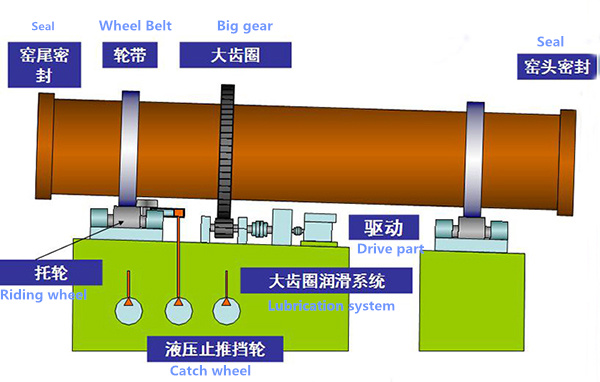
1. After entering rotary kiln, raw materials will enter standard bin through seven stages. After inflatable homogenization, raw materials will be fed into preheater through electro pneumatic valve, electric control flow valve, chute and belt conveyor. Raw materials will exchange heat with hot airflow. When raw materials will arrive at cyclone cylinder, raw materials will enter decomposition furnace for calcining. After raw materials enter five-level cyclone for feed-gas separation, raw materials will enter gypsum rotary kiln for calcining.
2. The decomposition furnace is composed of furnace body and gas pipeline. Tertiary air enters furnace through one side. Materials get into furnace through two feeding opening. Decomposed materials will enter rotary kiln after being collected by five-level cyclone cylinder. The rotary kiln adopts three-section grate cooler. Stroke adopts hydraulic style. The real area of grate bed is 121.2 square meters. Dust collected by new style rotary kiln head will mix with clinker in grate cooler. Finally, dust and clinker will sent to three clinker silos.
3. Hot air in high-temperature section of cooler will enter gypsum rotary kiln as secondary air through hot kiln hood. Partial air will enter decomposition furnace as tertiary air. Middle-temperature hot air in cooler enters coal grinder to dry raw coal. Residual gas will be discharged into atmosphere after being processed by electrical dust wiping system.
4. Exhaust gas treatment, preheated hot air will be sucked by high temperature fan. Then, after being cooled, hot air will work as drying heat source for raw material system or discharged in to atmosphere after being processed by electrical dust wiping system at kiln tail.
Latest Delivery
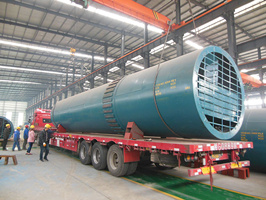
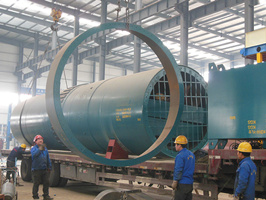
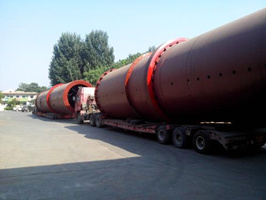
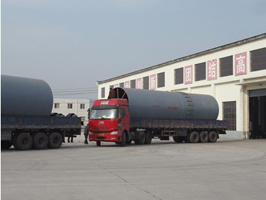
Project Case

Jinan 350TPD Lime Kiln Production Line
Attracted by lime rotary kiln manufactured by china famous rotary kiln supplier, Zhengzhou Taida, Jinan customer purchased a whole set of lime rotary kiln calcining machine to fulfill final production aim. The picture shown above presents the real working condition of Taida lime rotary kiln.
Raw material: Lime
Output capacity:350T/D

10TPH Russia Gypsum Production Site
Gypsum with high moisture is sent to hopper. Then, gypsum will enter the feeding end of rotary kiln dryer. Under this situation, the inclination of feeding end will be larger than natural inclination of gypsum.then, gypsum will enter rotary kiln dryer smoothly. calcining rotary kiln is a rotary drum with certain inclination.
Raw material:Phosphaste gypsum
Output capacity:1-10T/H
Technical Parameters
| Model | Specifications | Diameter | Length | Weight | Capacity |
| (m) | (cm) | (m) | (t) | (t/h) | |
| TDRG6 | φ600×6000 | φ600 | 6 | 2.9 | 0.5-1.5 |
| TDRG8 | φ800×8000 | φ800 | 8 | 3.5 | 0.8-2.0 |
| TDRG10.9 | φ1000×9000 | φ1000 | 9 | 5.2 | 0.8-2.5 |
| TDRG10.10 | φ1000×10000 | φ1100 | 10 | 5.6 | 1.0-3.5 |
| TDRG12.1 | φ1200×10000 | φ1200 | 10 | 14.04 | 1.8-5 |
| TDRG12.12 | φ1200×12000 | φ1200 | 12 | 14.8 | 2-6 |
| TDRG15 | φ1500×12000 | φ1500 | 12 | 17.76 | 3.3-7.5 |
| TDRG18 | φ1800×14000 | φ1800 | 14 | 29 | 5-9 |
| TDRG22 | φ2200×12000 | φ2200 | 12 | 33 | 6-12 |
| TDRG22 | φ2200×18000 | φ2200 | 18 | 53.3 | 10-15 |
| TDRG22.2 | φ2200×20000 | φ2200 | 20 | 56 | 15-25 |
| TDRG30.2 | φ3000×20000 | Φ3000 | 20 | 78 | 25 |
| TDRG30.25 | φ3000×25000 | Φ3000 | 25 | 104.9 | 32-36 |
Core Equipment
Applicable Materials
